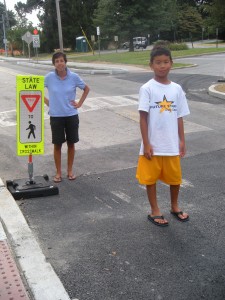I think that we all agree that there is a looming pension funding problem in the Commonwealth. Knowing this, I read with interest of the Harrisburg meeting yesterday calling to attention ongoing issues between the Pennsylvania State Education Association (PSEA) and the State Education Committee. Sen. Dinniman is the minority chair of the Education Committee and is obviously frustrated and spoke out regarding the lack of cooperation on part of the teacher union. (Article on this subject appears in today’s PA Independent, see below).
For those that are interested, here is the link for the TESD teacher’s collective bargaining agreement, 2008-2012. I am not sure exactly when contract negotiations begin for the next contract but in review of the contract, I found the following which may indicate that discussions on the next contract would start in 2011. Is this correct? Tomorrow is the scheduled date for Methacton School District teacher’s strike . . . however, in an effort to ward off the strike there is a negotiation session scheduled for 8 PM tonight between the Methacton School District and teacher union representatives. I’m guessing that the Tredyffrin-Easttown teacher local president Peter DePiano will be closely watching Methacton.
MEMORANDUM OF UNDERSTANDING ON SALARY SCHEDULES
Understanding that the demographics of the District will impact the matrix, the parties agree to a joint labor-management committee which will convene in the 4th year of the agreement to discuss possible strategies to keep increment costs down.
With our own school district beginning to have serious discussions about funding next year’s school budget, the article is timely. We know that the funding deficit in the school district for 2011-12 may be as high as $8.5 million, based on this week’s Finance Committee meeting. Understanding ways to handle the school district deficit . . . increasing property taxes, cutting school district programs and staff or imposing an Earned Income Tax (EIT); the upcoming School District meeting on Monday is important. The School Board has arranged a public EIT presentation by the Pennsylvania Economy League at Conestoga HS auditorium, 7:30 – 9 PM, Monday, October 18.
Education reform debate foreshadowed in Pa. legislative meeting
October 14, 2010
By Eric Boehm PA IndependentHARRISBURG, Pa. — If Wednesday’s meeting of the Senate Education Committee is any indication, education reform could be an explosive issue in Harrisburg next year.
During a day-long hearing on the potential expansion of school choice options in Pennsylvania, state Sen. Andrew Dinniman (D-Chester), told representatives from the Pennsylvania State Education Association (PSEA) that reforms would only be possible with cooperation from the state’s largest teachers’ union.
Apparently, such cooperation has been difficult to come by. “We can’t engage in a dialogue with you guys,” said Dinniman, minority chairman of the committee. “Either we talk or we don’t talk. Because if we all pass in the night saying we care about kids, and we never come together to talk, then the kids of this commonwealth are going to suffer.”
Dinniman told PSEA Treasurer Jerry Oleksiak committee members were very frustrated at being stonewalled by the union for several months. He said repeated attempts to set up a meeting with union leaders have been cancelled or ignored, and lobbyists hired by PSEA have publically “made nasty comments” about himself and Senate Education Committee Chair Jeffrey Piccola (R-Dauphin), another supporter of school choice programs.
The PSEA opposes expanding school choice initiatives, including vouchers and charter schools, because the organization claims they put traditional public schools at a disadvantage for funding.
“We know what works,” said Oleksiak, who pointed to several successful public school districts in the state. “We need targeted, direct resources into what we know works. Long-term, bi-partisan commitment, put the ideology aside. We need to address public education as a key civil right for the students in our Commonwealth.”
Dinniman said it took him nine months to get a list of educational priorities from PSEA when he was working to craft legislation, which he said made him wonder if PSEA’s commitment to students was “only window dressing.”
Wednesday’s hearing was meant as a preview for what is likely to be a major policy issue next year. Both major gubernatorial candidates have signaled their intent to pursue school choice initiatives if elected. Piccola said the cost of public education has become too much for the state’s taxpayers to bear. On average, Pennsylvania taxpayers spend more than $13,000 per student in the state’s public schools, and funding has increased by 40 percent over the last eight years. Despite the increase in spending, Piccola said student achievement has been flat statewide.
“We have to figure out how to spend the money we do have more efficiently. And it is quite clear to me, and I think it is quite clear to Sen. Williams and Sen. Dinniman, that the systems we have created called public schools are not performing,” said Piccola.
Piccola, Dinniman and state Sen. Anthony Williams (D-Philadelphia) plan to introduce legislation in January to expand the number of charter schools in the state and create a voucher program to give more families access to alternative public schools.
Both major gubernatorial candidates in Pennsylvania have promised to make school choice a priority of their administrations.

